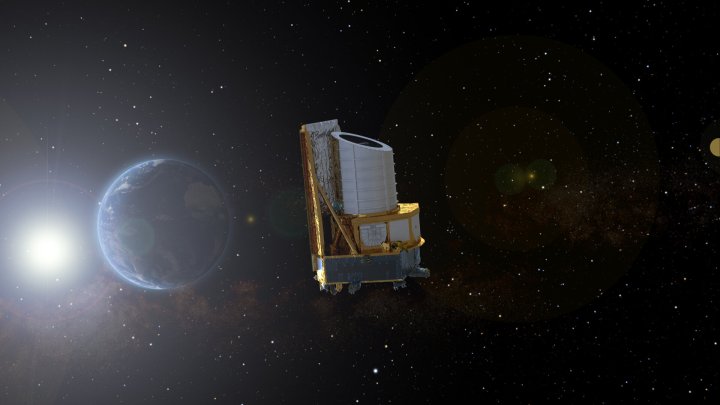The astronomy community is about to get a new instrument to probe the mysteries of dark matter, with the launch of the European Space Agency (ESA)’s Euclid telescope this Saturday. Euclid is a highly sophisticated space-based telescope that will observe huge swaths of the sky to create a 3D model of the universe to help elucidate some of the biggest questions in cosmology.
The launch of the telescope will be live-streamed, and we have the details on how to watch online below.
What to expect from the launch

The launch will take place from Cape Canaveral in Florida and will use a SpaceX Falcon 9 rocket. The launch is taking place from the U.S. rather than from Europe’s spaceport in French Guiana due to an issue with the originally planned launch vehicle. The original intention had been to launch Euclid using a Russian Soyuz rocket. However, ESA suspended its cooperation with Russia following the invasion of Ukraine, so it was not possible to use a Soyuz.
Instead, ESA made an agreement to launch Euclid using a SpaceX rocket. The mission also has ties with the U.S. as NASA is contributing hardware for one of the telescope’s instruments and will also be contributing to processing the data collected by the mission.
Once Euclid is in space it will begin its journey to the Lagrange point L2. It will take around four weeks to reach this orbit around the sun, at which point it will begin a several-month process of preparing its instruments before beginning science operations around three months after launch.
How to watch the launch
The launch of the Euclid spacecraft will be livestreamed by both ESA and NASA. You can watch the ESA stream using the video embedded at the top of this page or by heading to the ESA live stream YouTube page. Alternatively, you can also watch using the NASA app or by watching the NASA live channel online.
Coverage of the launch begins at 10:30 a.m. ET (7:30 a.m. PT) on Saturday, July 1, and will run for several hours until just after midday ET (9 a.m. PT). If you’d prefer to tune into just the key moments, ESA has provided an expected schedule as follows:
11:11 a.m. ET: Euclid launch on SpaceX Falcon 9
11:53 a.m. ET: Separation of Euclid from Falcon 9
1:57 a.m. ET: Earliest expected time to acquire Euclid’s signal
The first signal from Euclid should be acquired around 2 p.m. ET, which will mark the successful launch of the mission and confirm that the spacecraft is on its way to L2 as planned.



